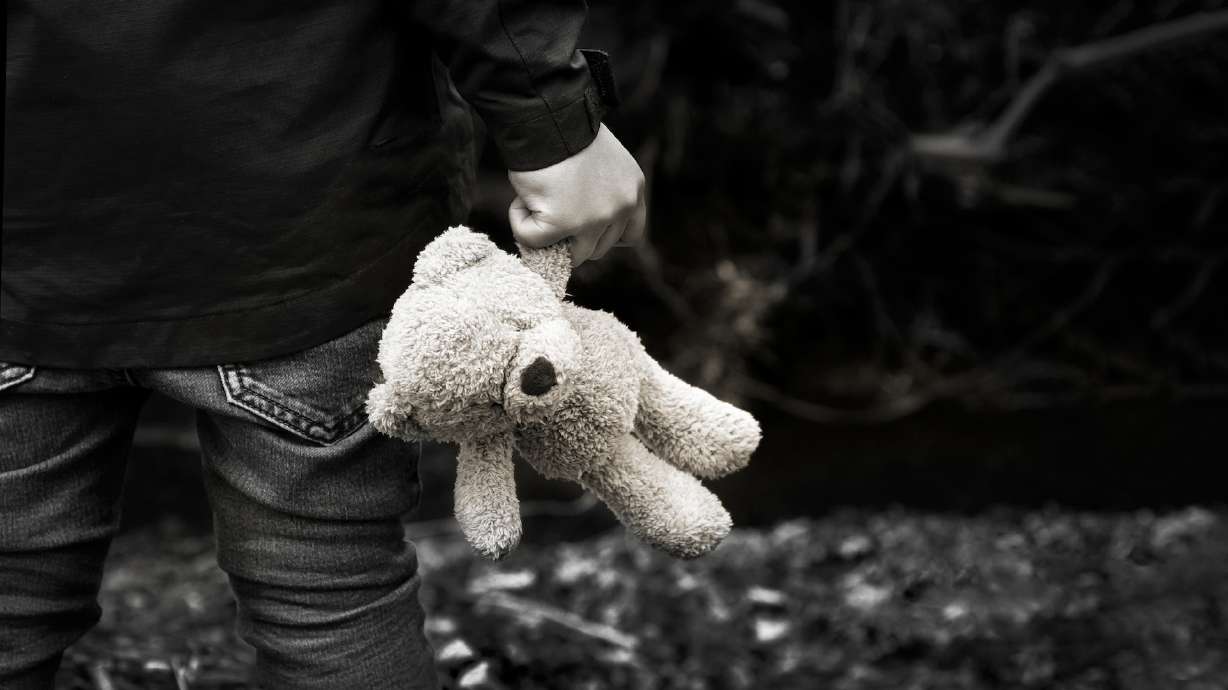Estimated read time: 4-5 minutes
This archived news story is available only for your personal, non-commercial use. Information in the story may be outdated or superseded by additional information. Reading or replaying the story in its archived form does not constitute a republication of the story.
SALT LAKE CITY — There are more than 10,000 substantiated child abuse cases in Utah each year, which is higher than the national average. Local experts believe intervention helps, but it isn’t helping enough children and more needs to be done to prevent child abuse and neglect from ever happening in the first place.
“If we care about families and kids, we need to change our thinking,” Tracy Gruber, director of the Utah Department of Workforce Services’ office of child care, said during a meeting of the Utah Coalition for Protecting Childhood at Red Butte Garden. “There are lots of people who are not successful because of the system and policies in place.”
There were 10,612 validated cases of child abuse in Utah in 2017, according to data from the children’s bureau of the U.S. Department of Health and Human Services. Eleven children died that year from maltreatment.
According to the Utah Coalition for Protecting Childhood, social determinants that deal with finances — including food insecurity, utilities, housing and transportation costs, as well as employment status — contribute not only to child abuse and neglect, but also lead to worse health outcomes and other problems that continue generation after generation.
Brent Platt, coalition co-chairman and head of legislative relations with the Utah Department of Human Services, said families that are trying to make ends meet end up falling short in other unforeseen areas, as well.
For example, he said, he knows of situations where teens are late for their classes in order to get younger siblings off to school, when a parent is working multiple jobs or late shifts to put food on the table or pay the rent.
“That leads to intergenerational poverty,” Platt said. Programs and resources exist for families and children, but a lot of parents don’t know about them or aren’t likely to ask for the help.
“For so many living in economically challenging situations, when that string (holding things together) breaks, there’s no one to fall back on,” Gruber said. “And the children feel it.”
Parents need to know they’re not alone, said Barbara Leavitt, community impact director with United Way and early childhood initiative director at Help Me Grow Utah.
“We are more similar than we are different,” she said regarding parenthood. “I had no idea that I didn’t know what I was doing.” Leavitt said people need to feel safe in order to ask questions or admit they need help, “and all of us need help.”
The coalition has lofty goals of eliminating much of Utah’s child abuse and neglect problem, but it needs the political will to do so.
Policies need to change.
Until we can say that for every child in Utah, 'it's great to be a kid,' then we have work to do.
–Joey Thurgood, Utah Department of Health
For so long, intervention and removing kids from situations where abuse occurs has been the process, but Joey Thurgood, Essentials for Childhood coordinator with the Utah Department of Health’s Violence and Injury Prevention Program, said science differs. She said the focus needs to be on a child’s total environment.
“Children need a safe, stable and nurturing environment,” she said. “We need to make sure that parents have what they need in order to provide those things that are important for raising healthy, happy children.”
Some of the policies holding families back are at the federal level. However, Thurgood said a lot can be done in Utah.
“Until we can say that for every child in Utah, ‘it’s great to be a kid,’ then we have work to do,” she said.
The group wants changes in tax law to support struggling families, as financial problems were identified as a risk factor in 21% of Utah’s child maltreatment cases, the 2017 data shows.
When the stress of family finances is alleviated in some way, kids can experience benefits as well, including having healthier parents. According to Gruber, “health is often the last thing a person can pay attention to in this situation.”
Related:
The coalition is also seeking more and higher quality child care options for both low- and middle-income families, and higher enrollment in early education. The federal data show that just 43% of Utah kids ages 3 to 4 are enrolled in any kind of school. Alcohol consumption and domestic violence among caretakers are significant risk factors for child abuse and neglect.
Utah is one of seven states that recently received funding for child abuse prevention efforts through the U.S. Centers for Disease Control and Prevention’s Essentials for Childhood Framework program. While the local program was founded five years ago, Thurgood said it can finally start making real progress.
“We have the science. We just need to convince policymakers,” she said. “It’s a hard sell, but it’s not hard to see that making changes upstream can make a difference for a lot of families and children.”
For more information and resources for parents and teachers, visit Prevent Child Abuse Utah online at pcautah.org. To report abuse, call the Utah Child Abuse Reporting Hotline at 855-323-3237.
Correction: A previous version indicated that Utah had the highest number of child abuse cases in the nation, when the state actually falls somewhere in the middle, but above the national average.










